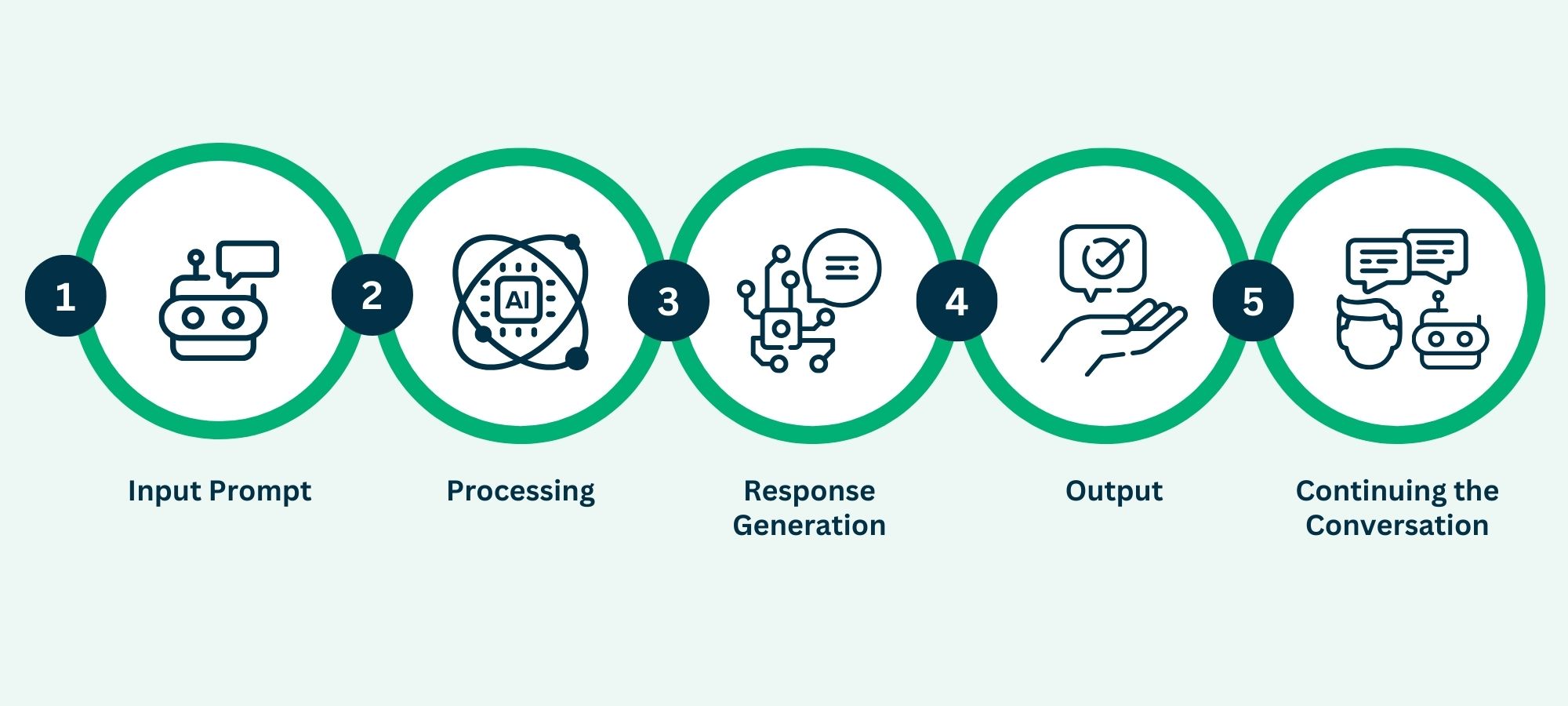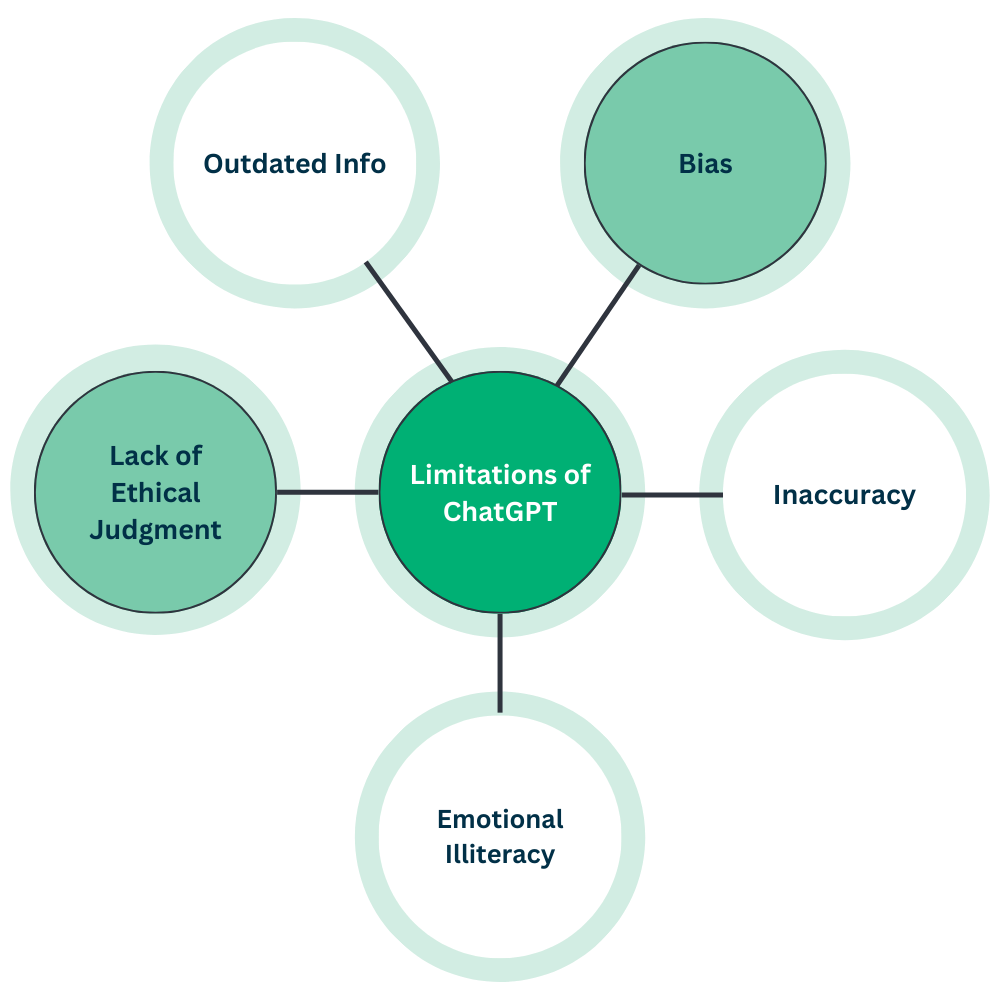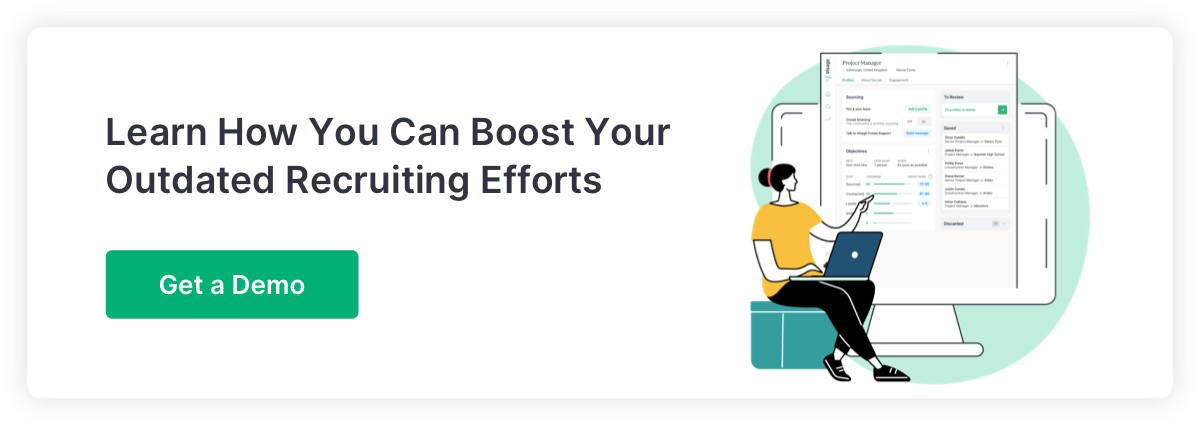| Table of Contents |
|---|
| ChatGPT for Recruiting 101 Where To Use ChatGPT for Recruitment Training ChatGPT: Some Caveats |
Unless you’ve been locked in a basement without WiFi since November 2022, you’ve probably at least heard of ChatGPT (now on version 4.0). This powerful generative AI tool is transforming how people work across every industry – and that includes recruitment.
Although it’s not a recruitment-specific AI tool, savvy recruiters are leveraging its functionality to make their work days a whole lot easier, and their results a whole lot better.
So, grab a coffee and explore our ChatGPT for Recruiting Guide. In it, you’ll discover ways you can use the ever-growing ChatGPT trend to streamline your workflow, enrich candidate experience, make hiring better decisions – and that’s just the start.
ChatGPT for Recruiting 101
But first, the basics. What is ChatGPT and how does it work?
ChatGPT is short for “Chat Generative Pre-Trained Transformer,” an advanced large language model (LLM) developed by OpenAI, a US artificial intelligence (AI) research organization. It uses a vast amount of text data from the internet to generate responses that resemble human-like verbal interactions.
Sign up with an email address to use this free tool, which also gives you access to every archived “chat” you have with GPT. Below, we give you a rundown of how the ChatGPT process typically works from the user side.

- Input Prompt: Type a prompt into the bar with “Message ChatGPT” at the bottom of the page. A prompt is a phrase you create to generate a specific reply. This could be a query or an instruction and may contain context, parameters, and descriptors to hone the result.
- Processing: ChatGPT analyzes your input prompt to understand the context and intent behind it.
- Response Generation: Based on what it thinks you’re looking for (although, technically, it doesn’t “think”), ChatGPT generates a relevant response drawn from learned patterns and information.
- Output: You’ll get a text-based, human-sounding response designed to be coherent and contextually relevant.
- Continuing the Conversation: You can continue your dialogue by providing additional prompts, allowing ChatGPT to generate more relevant or nuanced responses.
| Warning! When you deploy ChatGPT, you must also deploy your finest critical thinking skills. ChatGPT is super-useful, but it’s not infallible. It can be biased, weird, and just plain wrong. Find out more here. |
Getting the Best From ChatGPT: Train It!To get the best ChatGPT results for your recruitment workflow, it’s important to spend some time training and customizing it to meet your specific needs.
Like most AI tools in recruitment, ChatGPT comes pre-trained on a large collection of general internet text, so fine-tuning the model is essential.
The work you put in now will pay you back with increased accuracy and effectiveness and saved time in the long run. Training it with your with your company’s specific purposes and unique information will help you achieve actionable results.Here’s a quick overview of the training steps:
- Collect data: Gather past recruitment interactions, such as emails, chat logs, social media communications, and frequently asked questions.
- Clean the data: Process the data to remove sensitive or personal information, and structure it into clear inputs and responses.
- Fine-tune your language: Use your cleaned data to train ChatGPT to understand your unique job titles, qualifications, and recruitment processes.
- Define contextual prompts: Create input templates that provide context during interactions, such as a candidate’s name, job role, or recruitment stage.
- Choose training objectives: Set goals, such as providing accurate answers to candidate questions, scheduling interviews, and matching candidates to job openings.
- Validate and test: Continuously validate ChatGPT’s performance to make sure its responses are coherent and accurate.
- Continual improvement: Regularly update the data with new interactions and questions to keep ChatGPT’S responses current and effective.
Where To Use ChatGPT for Recruitment
ChatGPT is a multimodal tool that you can use at every stage of the recruitment cycle. Here are some of the more common uses:
Enhanced communication
Improving Your BrandingIf the candidates you’re looking for are turned off by your branding, they’ll go elsewhere. A brand that engages the right candidates supports a robust passive sourcing strategy, and you can use ChatGPT to help craft engaging, branded content that aligns with your company’s identity, values, and culture. It’ll help keep messaging consistent and appealing.
Not sure if your current branding is working for you? Use ChatGPT to assess whether your current communications reflect what you want them to reflect. Here’s how:
- Collect samples of your company communications, including web pages, social media posts, job ads, and company guidelines.
- Define your assessment criteria, e.g., your brand’s tone and values.
- Ask ChatGPT to provide feedback on the samples based on the criteria. Here’s an example prompt: “Our brand tone is engaging, inclusive, supportive, and transparent. Our values are growth opportunities, flexibility, and empowerment. Please analyze the following job posting for consistency with our brand tone and values:”
(P.S.: Don’t forget to add your job post!)
4. Compile the responses and look for patterns and anomalies.
Generating Ideas for Content Creation
When you’re busy trying to solve big talent sourcing problems, it’s not easy to come up with engaging ideas for blog posts, social media, and other content that’s essential for successful recruitment marketing.
ChatGPT can help you brainstorm topics and craft content tailored to your target audience. This saves you a ton of time and ensures your messaging resonates across different formats.
Don’t forget to edit the results so they sound human, don’t contain errors, and truly reflect your brand. Unedited AI-generated content can make a brand look lazy and inconsistent.
Personalizing Candidate Interactions
ChatGPT and “personalization” may seem contradictory, but, once trained, you (and ChatGPT!) can produce a range of templates and automated responses to support an engagement experience that makes the candidate feel more prized than processed.
From answering common candidate questions to providing updates on application statuses, ChatGPT can handle various interactions efficiently, freeing up your time for more strategic tasks.
Creating and Testing Job Ads
Ask ChatGPT to write compelling job advertisements from scratch or refine your existing templates.
You can add specific requirements for character limitations, headlines, tone, etc. If you already have templates for ads, you can ask ChatGPT to fill in the ‘sell’ with persuasive messaging.
ChatGPT’s ability to generate multiple versions of job ads also helps with A/B testing – simply test different ad variations to assess which ones attract more of the applicants you’re looking for. This data-driven approach helps you optimize job ads for better candidate engagement and higher conversion rates.
Handling Objections Professionally
In recruitment, objections raised during interviews, discussions, or communications with candidates or stakeholders such as hirers happen, and the emotional weight of trying to resolve the situation can weigh heavily on recruiters.
Here’s where AI can help you craft polite, professional, and persuasive responses to address such concerns.
Enhancing Internal Communication
Beyond external recruitment, AI can improve your internal comms by drafting award submissions, talent personas, summaries of labor laws, and generating internal surveys for employee feedback.
Communicating in Multiple Languages
ChatGPT’s translation capabilities can be a great starting point when you need to communicate with candidates in different regions, or if you’re deploying a multinational recruitment strategy. It can enhance communication and inclusivity.
However, you’ll always need the oversight of real humans to edit and review the translation – not just to make sure it’s accurate, but that it’s also culturally appropriate in the target language.
Training
Interviewer Training
ChatGPT can create mock interview situations, simulating candidate scenarios to help interviewers practise and refine their techniques in a low-consequence environment.
Set the candidate level required – entry-level candidate, an experienced professional, or someone with specific skills – to give interviewers the opportunity to handle a wide range of potential situations. ChatGPT can assess the interviewer’s communication style, active listening skills, questioning techniques, and ability to evaluate candidate responses objectively.
It can also suggest tips and strategies to help interviewers create a comfortable and engaging interview environment.
Candidate Training
Use ChatGPT’s capabilities to generate content, questions, and answers across various formats to create a suite of candidate practice and real assessment tests. Define the skills and competencies required, and the corresponding answer formats.
ChatGPT: Some Caveats
Nothing in this world is perfect, and that certainly applies to ChatGPT. After all, it’s built on the language and content of stuff from the internet, and we all know what a paragon of reason, fact, and courtesy that is. (It also doesn’t “get” sarcasm.)
Use it for the good stuff, but be aware of its limitations. Here are the main factors to watch out for:

- Outdated Information: ChatGPT has no or limited access to the internet, so it’s drawing on an older dataset.
- Bias: The language and data used to train ChatGPT aren’t representative of true global diversity. For instance, English is a dominant language on the Internet, skewing outputs toward this group of users.
- Inaccuracy: It gets facts wrong.
- Emotional illiteracy: Don’t expect ChatGPT to understand emotional nuances such as sarcasm.
- Lack of Ethical Judgment: It can’t discern the credibility, truthfulness, or fairness of sources.
ChatGPT for Recruiting: Next StepsLike other AI-powered solutions, ChatGPT has been proven to help companies attract top talent, improve candidate experiences, and build a strong brand.Like most AI in recruitment, getting started with ChatGPT for recruiting comes with special challenges, least of all, where to start! It’s doubly important that you use it ethically and are very aware of its limitations.For the next steps and a ton of hints, tips, and tricks, why not download our free, step-by-step Recruiter’s Guide To ChatGPT?

Director of Sourcing Operations at Visage, Evelyn has experience in agency, RPO, and in-house roles spanning 12 years in the recruitment industry. Evelyn has built and oversees a 4000-member global freelance sourcing community. Every Christmas in Ireland, she enjoys putting up her THREE Christmas trees.

